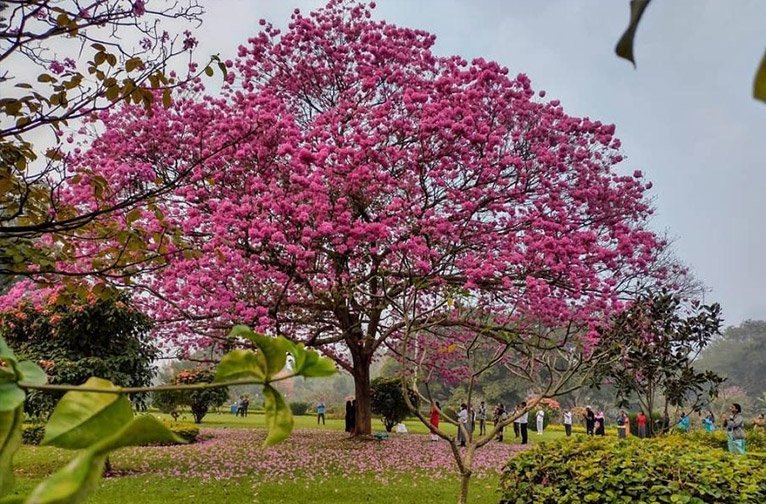Introduction:
In the heart of Bengaluru, the sprawling metropolis known for its traffic snarls and urban hustle, a magical transformation occurs each mid-January. The city’s landscape is adorned with hues of pink as the Tabebuia avellanedae and Tabebuia rosea, commonly known as pink trumpet trees, burst into bloom. This annual phenomenon turns Bengaluru into a pink wonderland, drawing residents and visitors alike to witness the breathtaking spectacle.
Origin of Pink Blossoms:
The roots of Bengaluru’s pink blossoms trace back to the British colonial era when horticulturists were commissioned to enhance the city’s green cover. British and German horticulturalists, such as James Cameron and Gustav Krumbiegel, imported exotic species from colonial territories and botanical gardens worldwide. Among these imports were the vibrant pink trumpet trees, native to South America.
The pink trumpet trees, also referred to as Tabebuia, were strategically planted, creating a visual spectacle that transcends the ordinary. This thoughtful selection was not merely for visual appeal but likely an attempt to recreate a semblance of the springtime left behind by the British colonists.
Persistence through Time:
As the British rule waned, the Tabebuia trees persisted, and in the 1980s, SG Neginhal, an Indian forest official and horticulturist, played a pivotal role in solidifying their presence. Alongside volunteers, Neginhal contributed to creating a green cover around the city by planting over 15 lakh trees of various species. The Tabebuia trees, with their distinctive trumpet-shaped flowers, became an integral part of Bengaluru’s landscape.
Annual Blossoming:
The transformation begins as the pink trumpet trees shed their leaves by the end of November, paving the way for tiny buds that bloom into trumpet-shaped flowers in December. The city experiences this vibrant pink display from December to March, marking an annual celebration of nature’s artistry.
Celebrating the Desi Version of Hanami:
Bengaluru residents revel in their version of Hanami, the Japanese cherry blossom festival, as the city turns into a canvas of pink. Enthusiastic social media posts capture the essence of this celebration, with hashtags like #BengaluruInBloom trending during this time. The visual spectacle is not only a treat for the eyes but also a testament to the city’s commitment to preserving its greenery and natural beauty.
Popular Viewing Spots:
Key locations like Cubbon Park, State Central Library, Lal Bagh, Sadashivanagar, and Koramangala become hotspots for witnessing the blooming beauties. The city’s roads, typically congested with traffic, transform into picturesque avenues, providing residents with a rare visual respite.
Integration with Bengaluru’s Green Legacy:
Bengaluru, known as the ‘Garden City,’ has long been celebrated for its lush greenery. The pink blossoms seamlessly integrate with the city’s natural landscape, enhancing its aesthetic appeal. The visual juxtaposition of pink blooms against the backdrop of greenery creates a captivating and surreal experience for both locals and visitors.
Conclusion:
As Bengaluru dons its pink glory each year, it not only showcases the transient beauty of nature but also highlights the city’s commitment to preserving its green spaces. The annual blooming of the Tabebuia trees serves as a reminder of the harmonious coexistence between urban development and nature’s wonders. In this pink wonderland, Bengaluru invites all to partake in the visual symphony of Tabebuia blossoms and experience the magic that unfolds on its streets and parks during this enchanting season.
Book Paris Trip
Paris sightseeing
Book Paris activities
Louvre museum paris
Paris limousine rental
Rolls Royce Paris
Eiffel Tower Paris
Airport Transfer Paris
Book Paris Taxi
Seine River Cruise
Wine Tasting Paris
Paris luxury hotels
Switzerland luxury hotels
Europe Car rental
Europe coach rental
Paris Limousine
Dior Paris
Beauvais Airport transfer
